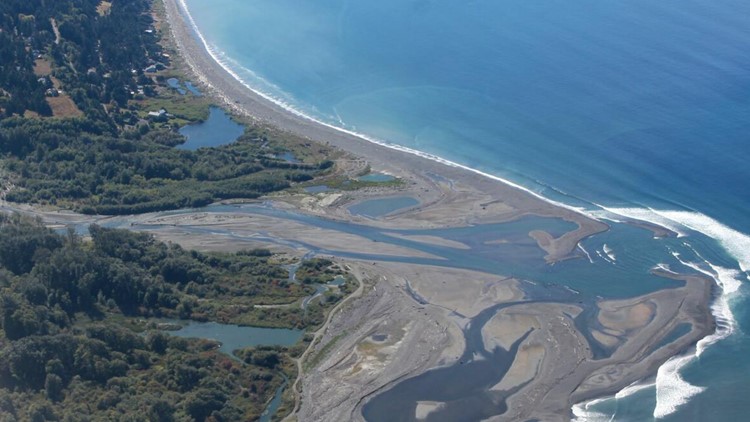PORT ANGELES, Wash. — The Clallam County Sheriff's Office is asking the public for donations to pay for a DNA analysis of a foot still in a shoe that washed ashore near the mouth of the Elwha River in Port Angeles in 2021.
In 2022, the Clallam County Sheriff's Office partnered with Othram to determine if advanced forensic DNA testing could help establish an identity for the woman or possibly a close relative.
Othram is a private, forensic genealogy company that specializes in testing trace amounts, degraded or contaminated DNA evidence. A DNASolves crowdfund has been created to cover the cost of the testing and casework. DNASolves works exclusively with law enforcement to facilitate fundraising for Othram's services.
Investigators determined the shoe’s label was a woman’s size 8 New Balance brand shoe. Due to the limited recovery of the woman’s remains, investigators have been unable to make a definitive determination about the woman’s age, ethnicity or height.


This discovery was one of over 20 shoes with feet in them that have washed up on shorelines surrounding the Salish Sea in the last decade.
So, why does it occur?
University of Washington Professor of Oceanography Dr. Parker MacCready says the phenomenon occurs due to three main factors: how bodies decompose in these waters, the buoyancy of the shoes and wind patterns in the region.
Salish Sea waters are very cold, the temperature usually does not exceed 55 degrees. According to MacCready, the cool water helps preserve what is left of the bodies that is not eaten by marine life.
That’s where the shoes come in. Most modern sneakers contain a lot of foam, which is hard for scavengers to eat, so they often stay in tact, along with feet that are inside them. They are also very buoyant and frequently float to the surface.
So, how do they end up on the shore? It primarily has to do with the wind.
“Anything that's floating and that protrudes a little bit above the surface of the water, whether it's, you know, a piece of trash or a foot in a sneaker or a dead bird, or something like that, they are pushed around by the wind,” MacCready said.
The wind speed is very fast compared to the speed of the water. So, the wind will push an object through the water faster than the current can move it.
This region also sits within the Roaring Forties, or areas of the world between 40 and 50 degrees longitude, which brings westerly winds.
"We tend to have more onshore winds here," MacCready said. "And that would be a great way to persistently get more floating debris on our beaches."
The wind speed and pattern are why Washington and Canada see this phenomenon more frequently than other populated areas along the coast, like San Francisco.
Locations along our longitude, like New York City, will see the same wind pattern, but will blow offshore, taking debris with it.
Most of these deaths are from boating accidents, people slipping off rocks or suicides. Without identification or more of the body, the Clallam County Sheriff’s Office does not know the cause of death for this Jane Doe.
Anyone with information that could aid in this investigation is encouraged to contact the Clallam County Sheriff's Office by calling the tip line at 360-417-2540 and referencing agency case 2021-00023819.
To donate to these efforts, visit the DNASolves website.



